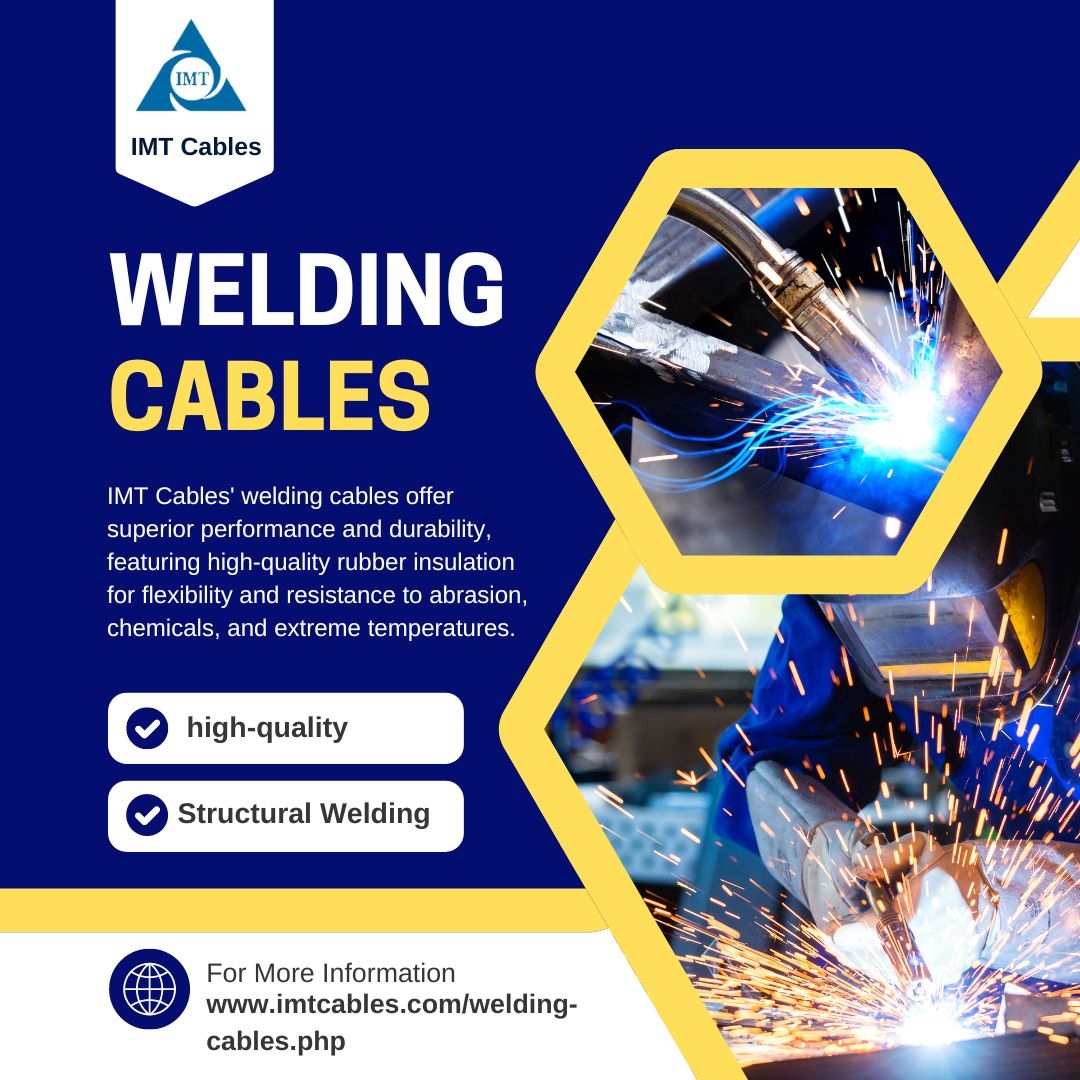When it comes to welding, the choice of welding cables can significantly impact the quality, safety, and efficiency of your work. Welding cables are the lifelines that deliver power to your welding equipment, and selecting the right type can make all the difference. In this blog, we'll explore the key factors to consider when comparing welding cables and help you find the perfect fit for your needs.
Welding Cables ?
Welding cables are designed to carry high currents required for welding applications. These cables are typically made from finely stranded copper to maximize flexibility and are insulated with durable, heat-resistant materials such as rubber or neoprene. The primary function of welding cables is to ensure a reliable electrical connection between the power source and the welding electrode.
Key Factors to Consider
- Cable Size and Amperage Capacity
- Gauge Size: Welding cables come in various gauge sizes, typically ranging from 6 AWG to 4/0 AWG. The gauge size determines the cable’s current-carrying capacity. Thicker cables (lower gauge numbers) can carry higher currents, which is essential for heavy-duty welding tasks.
- Amperage Requirements: Consider the amperage requirements of your welding equipment. For example, a 2 AWG cable might be suitable for applications up to 200 amps, while a 2/0 AWG cable could handle up to 400 amps. Matching the cable size to your equipment's needs ensures optimal performance and safety.
- Cable Length
- Voltage Drop: The length of the welding cable affects the voltage drop. Longer cables have higher resistance, leading to a potential drop in voltage and reduced efficiency. It's crucial to choose a cable length that minimizes voltage drop while providing sufficient reach for your work.
- Flexibility Needs: In environments where mobility is essential, shorter, more flexible cables might be preferable. Conversely, longer cables may be necessary for projects that require extended reach.
- Insulation Material
- Durability: Welding environments can be harsh, with exposure to high temperatures, abrasion, and chemicals. Insulation materials like EPDM rubber or neoprene offer excellent durability and heat resistance, making them ideal for heavy-duty use.
- Flexibility: The flexibility of the cable is crucial for maneuverability and ease of use. Finely stranded copper conductors combined with flexible insulation materials can provide the necessary flexibility without compromising durability.
- Environment and Application
- Indoor vs. Outdoor Use: If you are working in an outdoor environment, ensure the cable is resistant to UV radiation, moisture, and extreme temperatures. Indoor cables may not require such stringent protective features.
- Specific Applications: Different welding processes (MIG, TIG, Stick) may have specific requirements for cable performance. Ensure that the welding cable you choose is compatible with your welding process and equipment.
Comparing Welding Cable Options
To illustrate the process of finding the perfect welding cable, let's compare a few options based on the factors mentioned above:
- IMT Cables' Standard Welding Cable
- Gauge Size: Available in 2 AWG, 1 AWG, and 1/0 AWG.
- Insulation Material: High-quality EPDM rubber, known for its durability and flexibility.
- Applications: Suitable for general-purpose welding, offering a balance of performance and cost-effectiveness.
- Heavy-Duty Welding Cable
- Gauge Size: Available in 2/0 AWG and 3/0 AWG for higher amperage requirements.
- Insulation Material: Neoprene insulation, providing enhanced resistance to chemicals and extreme temperatures.
- Applications: Ideal for industrial and construction environments where cables are subjected to heavy wear and tear.
- Flexible Welding Cable
- Gauge Size: Available in 4 AWG and 6 AWG for lower amperage requirements.
- Insulation Material: Flexible rubber insulation for maximum maneuverability.
- Applications: Best suited for light-duty welding tasks and applications requiring frequent cable movement.
Making the Right Choice
Choosing the right welding cable involves assessing your specific needs and matching them to the cable's features. Here are some steps to guide you through the selection process:
- Determine the Amperage Requirements: Identify the maximum amperage your welding equipment will require and select a cable gauge that can handle this load.
- Consider the Work Environment: Evaluate whether you need a cable that can withstand outdoor conditions, chemical exposure, or high temperatures.
- Assess the Cable Length: Choose a cable length that provides adequate reach without causing significant voltage drop.
- Prioritize Flexibility: If your work involves frequent movement or intricate welding tasks, prioritize cables with high flexibility.
- Consult Experts: Don’t hesitate to consult with cable manufacturers or suppliers. At IMT Cables, we offer expert guidance to help you select the perfect welding cable for your needs.
Conclusion
Finding the perfect welding cable is essential for ensuring efficient, safe, and high-quality welding operations. By considering factors such as cable size, length, insulation material, and specific application needs, you can make an informed decision. At IMT Cables, we offer a wide range of welding cables designed to meet the diverse requirements of various industries. Explore our selection and find the ideal welding cable that delivers the performance and reliability you need.
For more information or to discuss your specific requirements, feel free to contact us. At IMT Cables, we’re committed to providing the best cable solutions for your projects.



